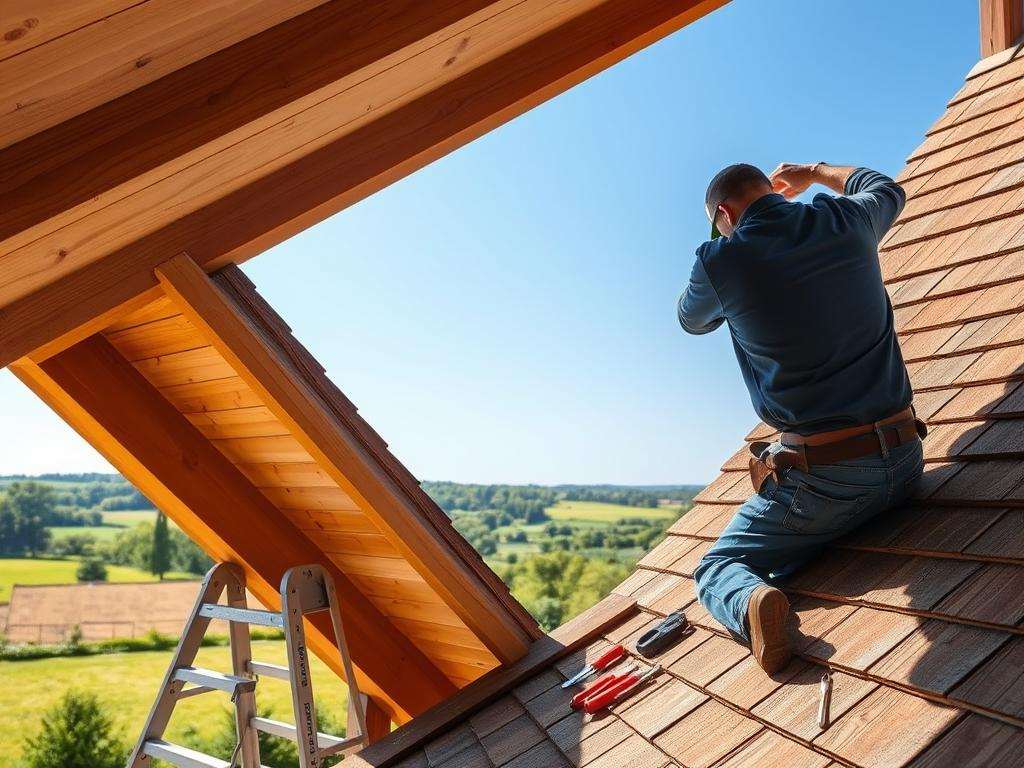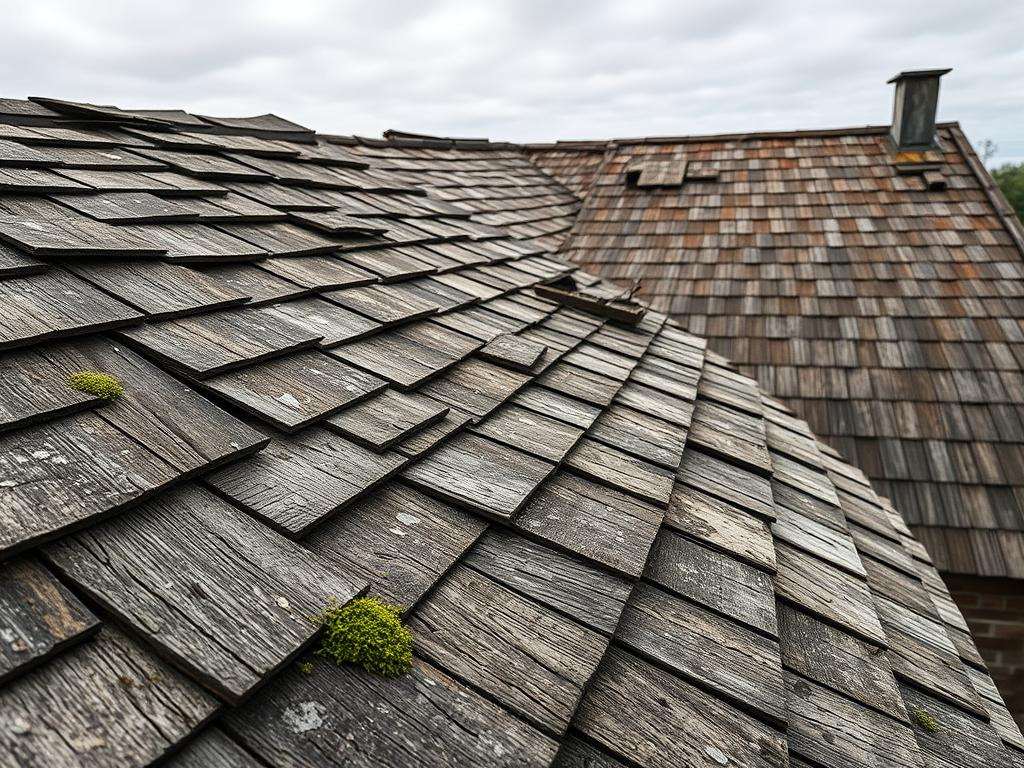A wooden roof can add beauty and durability to a home. But, its lifespan depends on several factors. Homeowners often ask how long their wooden roof will last and how to make it last longer. Wooden roofs can last 20-40 years, sometimes longer with proper care and quality materials. Factors like climate and maintenance significantly impact lifespan.
The type of wood, maintenance, and the environment all affect a wooden roof’s lifespan. With the right care, a wooden roof can last for decades. It can keep your home looking natural and attractive. Experts say a well-cared-for wooden roof can last between 20 to 30 years.
Key Takeaways
- Understand the factors that affect the lifespan of your wooden roof.
- Learn how to maintain your wooden roof to maximize its durability.
- Discover the importance of regular inspections and repairs.
- Find out how environmental conditions impact your wooden roof’s longevity.
- Get tips on how to choose the right type of wood for your roof.
Understanding the Lifespan of Wooden Roofs
To make a wooden roof last longer, knowing what affects its durability is key. The type of wood, the environment, and how well it’s installed all play a part. These elements together decide how long a wooden roof will last.
Average Lifespan by Wood Type
Wooden roofs vary in lifespan based on the wood type. Cedar and redwood are favorites because they resist rot and insects well.
| Wood Type | Average Lifespan | Notable Characteristics |
|---|---|---|
| Cedar | 20-30 years | Resistant to rot and insects, aromatic |
| Redwood | Up to 40 years | Highly resistant to decay, durable |
The wood type greatly affects a roof’s lifespan. Cedar roofs last 20 to 30 years. Redwood roofs can last up to 40 years.
Environmental Impact on Duration
Environmental conditions are vital in determining a wooden roof’s lifespan. Climate, weather, and sunlight exposure all matter.
Roofs in rainy or very hot areas need more upkeep. Roofs in direct sunlight also wear down faster.
Quality of Installation Effects
The installation quality is also critical for a wooden roof’s lifespan. Good installation, including flashing and ventilation, prevents damage and weak spots.
A well-installed roof lasts longer and needs less care. It’s important to choose experienced installers to ensure a durable roof.
Key Factors Affecting Wooden Roof Durability
Several critical elements determine the durability of wooden roofs. These include environmental conditions, maintenance practices, and the quality of the initial installation. Homeowners need to understand these factors to maximize their wooden roof’s lifespan.
Environmental conditions greatly impact a wooden roof’s longevity. Extreme weather like heavy rainfall, intense sunlight, and strong winds can affect it. For example, too much moisture can cause rot and decay. On the other hand, too much sunlight can dry out and crack the wood.
Maintenance practices are also key to preserving wooden roofs. Regular inspections and repairs can catch and fix problems early. This includes cleaning the roof, treating the wood to prevent pests and decay, and ensuring all roofing elements are securely fastened.
The quality of the initial installation is another critical factor. A well-installed roof, with correctly aligned shingles, adequate ventilation, and secure fastening, will last longer. It’s important to hire experienced professionals for the installation to ensure it’s done right.
| Factor | Impact on Durability | Mitigation Strategies |
|---|---|---|
| Climate | Extreme weather conditions can reduce lifespan. | Use climate-resistant materials, regular inspections. |
| Maintenance | Poor maintenance can lead to premature aging. | Regular cleaning, inspections, and repairs. |
| Installation Quality | Poor installation can significantly reduce lifespan. | Hire experienced professionals, ensure proper techniques. |
By understanding and addressing these key factors, homeowners can increase their wooden roof’s lifespan. This ensures their roofs remain durable and functional for years to come.
Essential Maintenance Practices for Wooden Roofs
To keep your wooden roof in top shape, a good maintenance routine is key. This routine includes several important steps. These steps help keep your roof looking great and working well.
Regular Inspection Schedule
Checking your roof regularly is a must. Look for damage, wear, or signs of decay at least twice a year. Focus on:
- Missing, damaged, or loose shingles
- Signs of rot or insect infestation
- Debris accumulation
For more detailed tips, check out essential maintenance tips for wood roofing.

Cleaning and Treatment Methods
Cleaning your roof is important to remove dirt and debris. Use a soft brush or a low-pressure washer. Then, apply a treatment to protect the wood from rot and insects. Make sure the treatment fits your roof’s wood type.
Professional Maintenance Requirements
While you can do some maintenance yourself, hiring a pro is often better. They can spot issues you might miss and do repairs that need special skills.
Seasonal Care Guidelines
Seasons change, and so do the needs of your roof. In spring and fall, check for damage from harsh weather. In summer, clear debris to prevent rot. In winter, watch for ice dams and ensure good attic ventilation to avoid moisture buildup.
Signs Your Wooden Roof Needs Attention
Knowing when your wooden roof needs help can prevent expensive fixes. A wooden roof can last a long time if you take care of it. With the right maintenance, it can last for decades.
Visual Indicators of Damage
Checking your roof regularly is key. Look for cracks, curls, and missing shingles. These signs mean your roof is damaged and needs fixing fast.
Also, check around chimneys, vents, and skylights. These spots are more likely to get damaged.

Common Problem Areas
Some parts of your roof are more likely to get damaged. The edges and valleys face harsh weather. Keeping these areas in good shape is important for your roof’s health.
| Problem Area | Common Issues | Recommended Action |
|---|---|---|
| Roof Edges | Cracked or missing shingles, wear due to weather exposure | Regular inspection, repair or replace damaged shingles |
| Valleys | Debris accumulation, water damage | Clean debris, inspect for water damage, repair as needed |
| Chimneys and Vents | Leaks around seals, damage to flashing | Inspect seals and flashing, repair or replace as necessary |
When to Contact a Professional
If you see any damage, call a pro to check and fix your roof. A skilled contractor can spot problems you might miss. They can fix your roof to make it last longer.
Conclusion: Maximizing Your Wooden Roof’s Lifespan
To make your wooden roof last longer, you need a solid plan. This includes regular upkeep, correct installation, and knowing what affects its durability. By doing regular checks and following key maintenance steps, you can greatly extend your roof’s life.
Keeping your wooden roof in top shape is not just about routine inspections. It’s about being proactive to fix problems early. This means using the right cleaning and treatments, getting professional help when needed, and following seasonal care tips to shield your roof from the weather.
By focusing on these important steps, homeowners can have a strong and attractive wooden roof for many years. A well-kept wooden roof boosts your home’s look and protects it from the elements. It’s a smart choice for any homeowner.